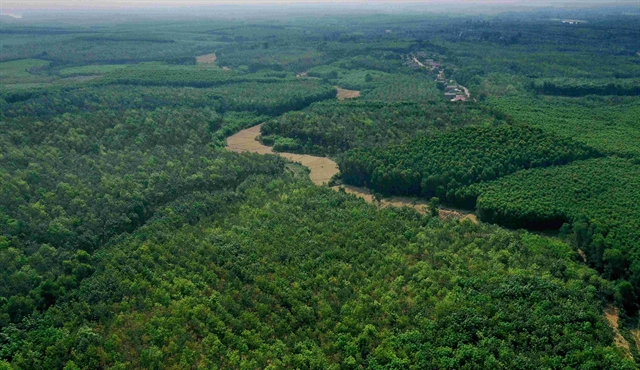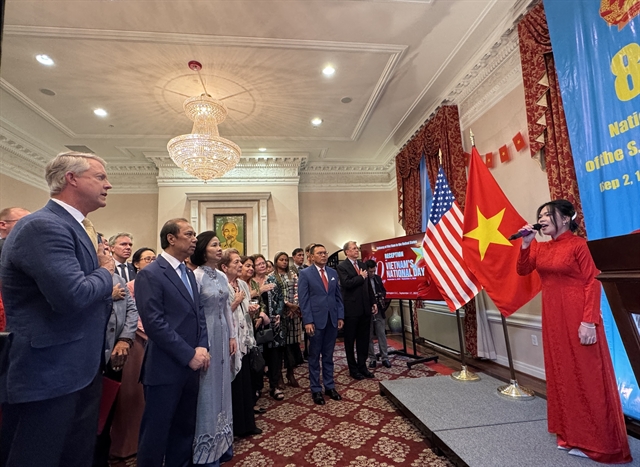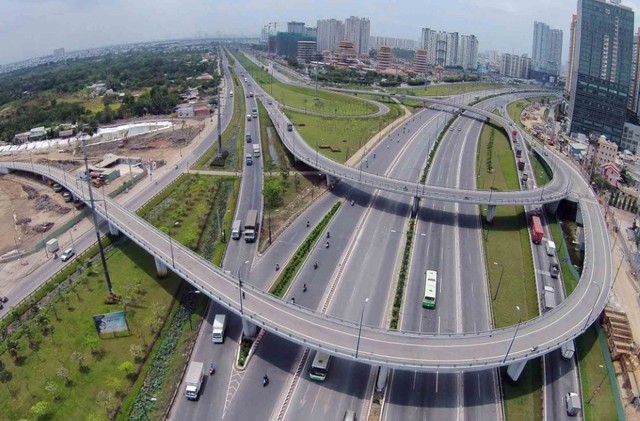 Environment
Environment

“Dirty” and “stinky” are the two words most used to describe the Thọ Quang Port in the central Đà Nẵng City over the last decade.
 |
| Trash in the adjacent area to the Thọ Quang Lock in the central city of Đà Nẵng. — VNA/VNS Photo Trần Lê Lâm |
ĐÀ NẴNG — “Dirty” and “stinky” are the two words most used to describe Thọ Quang Port in the central Đà Nẵng City over the last decade.
From Mân Quang Bridge overlooking the port, garbage bags can be seen spread across adjacent grass fields and embankments.
A fishing port of the city, after years of receiving untreated domestic wastewater and industrial wastewater from tourist cruises and seafood processing factories, Thọ Quang Port is now glazed with black grease and stinks, the Lao Động (Labour) newspaper reported.
The coastal city of Đà Nẵng is facing severe water pollution in some of its major tourism spots, while clean-up efforts from local authorities have had little effect, putting local residents’ livelihoods and the city’s tourism economy at risk.
Mỹ Khê Beach, which used to be ranked among the world’s most beautiful beaches, faces a similar situation. Wastewater has been discharged from the city’s 41 wastewater discharge outlets directly into the sea, resulting in not only water pollution but also erosion of hundreds of cubic metres of sand.
The conditions in these areas are affecting local residents’ livelihoods. Nguyễn Thị Chín, who works in tourism on the beach, said that the beach is getting so polluted it scares tourists off.
“A few years ago wastewater was only discharged into the sea from time to time,” she said. “But now it’s happening more frequently, bringing garbage and dead sea creatures to the shore.”
Residents living near the wastewater discharge outlets reported feeling “itchy” after putting their feet into the water. Tourists were reported to have moved to other beaches for their vacations.
“The foul smell follows us into every meal and even in our sleep,” said a hotel owner living near the Thọ Quang Lock. “Nobody dares to come near this area anymore, which is a real loss for our business.”
Scratching the surface
In July last year, Huỳnh Đức Thơ, vice chairman of the city’s People’s Committee, said in a meeting regarding the Thọ Quang Lock’s pollution that “no tough measures have been implemented other than the efforts to clean up the area,” and directed city authorities to get tougher in tackling the issue.
A year later, pollution persists at the port despite investments worth hundreds of millions of đồng from the port’s management board to treat waste and wastewater at Sơn Trà wastewater treatment plant before discharging it.
“Sanitation workers clean up trash above and below the water from some 700 tourist cruises and fishing boats per day, but each day everything goes back to where it was,” said Ngô Văn Cát, deputy director of the port’s management board.
“The biggest problem is that we are still using manual waste treatment techniques for such an important fishing port of the city and the central region, which hosts some 22,000 fishing boats per year,” he said.
Regarding the April decision of the city’s agricultural department to spend VNĐ271 billion (US$11.9 million) developing the port into a major fishing port and seafood logistics centre, Cát said he hopes it will help solve the pollution issue and encourage tourists to visit.
The increasing number of tourists the city has received in the last few years is one of the factors that overwhelmed its wastewater treatment capacity, said Mai Mã, director of the Đà Nẵng Drainage and Wastewater Treatment Company.
Last month, 11 households that raised fish in the Cổ Cò River in the city’s Ngũ Hành Sơn District were devastated to discover that dozens of tonnes of their fish were dead as the result of wastewater discharge from a wastewater treatment plant.
“The amount of domestic wastewater has increased by three to four times, leaking into the sea even during the dry season,” Mã said.
“Our decade-old equipment cannot meet the wastewater treatment demands,” he added. “We are waiting for projects on water quality improvement from foreign sponsors to be implemented, but that is unlikely to happen anytime soon”. — VNS




